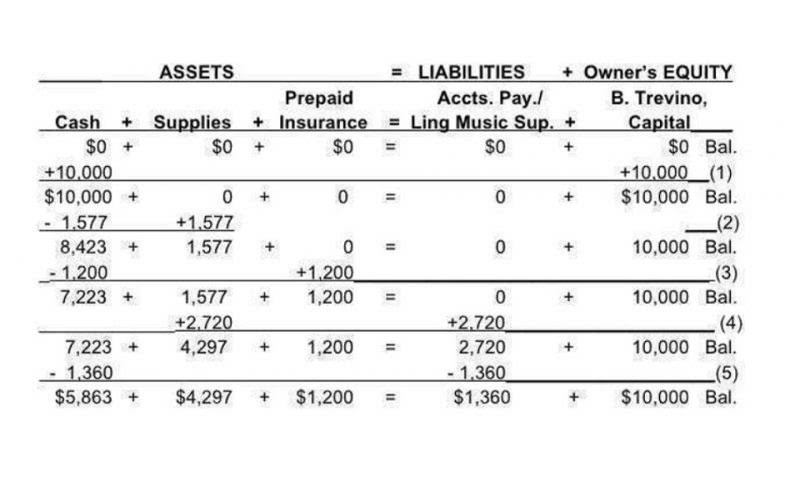
To determine the income (profit orloss) from the month of January, the store needs to close theincome statement information from January 2019. Both closing and opening entries record transactions, but there is a slight variation in their purpose. Permanent accounts, also known as real accounts, do not require closing closing entries entries.
- Understanding the accounting cycle and preparing trial balancesis a practice valued internationally.
- Adjusting entries ensures that revenues and expenses are appropriately recognized in the correct accounting period.
- The entries take place “behind the scenes,” often with no income summary account showing in the chart of accounts or other transaction records.
- After the financial statements are finalized and you are 100 percent sure that all the adjustments are posted and everything is in balance, you create and post the closing entries.
- Organizations can achieve a 40% increase in close productivity, resulting in a more streamlined financial close process and allowing your team to focus on more strategic activities.
Types of Accounts
The purpose of the closing entry is to reset temporary account balances to zero on the general ledger, the record-keeping system for a company’s financial data. In this example we will close Paul’s Guitar Shop, Inc.’s temporary accounts using the income summary account method from his financial statements in the previous example. At the end of a financial period, businesses will go through the process of detailing their revenue and expenses. A net loss would decrease retained earnings so we would do the opposite in this journal entry by debiting Retained Earnings and crediting Income Summary.
How Highradius Can Help You Streamline Your Accounting Management

The goal is to make the posted balance of the retained earnings account match what we reported on the statement of retained earnings and start the next period with a zero balance for all temporary accounts. A temporary account is an income statement account, dividend account or drawings account. It is temporary because it lasts only for the accounting period. At the end of the accounting period, the balance is transferred to the retained earnings account, and the account is closed with a zero balance. For each temporary account there will be a closing journal entry. Temporary accounts are used to compile transactions that impact the profit or loss of a business during a year, while permanent accounts maintain an ongoing balance over time.
Step 3 of 3

The expense accounts have debit balances so to get rid of their balances we will do the opposite or credit the accounts. Just like in step 1, we will use Income Summary as the offset account but this time we will debit income summary. The total debit to income summary should match total expenses from the income statement.

Trial Balance

The balance sheet’s assets, liabilities, and owner’s equity accounts, however, are not closed. These permanent accounts and their ending balances act as the beginning balances for the next accounting period. On the statement of retained earnings, we reported the ending balance of retained earnings Food Truck Accounting to be $15,190. We need to do the closing entries to make them match and zero out the temporary accounts.
- Now, it’s time to close the income summary to the retained earnings (since we’re dealing with a company, not a small business or sole proprietorship).
- It can be a calendar year for one business while another business might use a fiscal quarter.
- Closing your accounting books consists of making closing entries to transfer temporary account balances into the business’ permanent accounts.
- Now, the dividend account has a zero balance, and the retained earnings will have an ending credit balance of $4,750 (because dividends decrease retained earnings, so $14,750 previous balance minus $10,000 of dividends gives us $4,750).
- It isimportant to understand retained earnings is not closed out, it is only updated.
We see from the adjusted trial balance that our revenue account has a credit balance. To make the balance zero, debit the revenue account and credit the Income Summary account. Other accounting software, such as Oracle’s PeopleSoft™, post closing entries to a special accounting period that keeps them separate from all of the other entries. So, even though the process today is slightly (or completely) different than it was in the days of manual paper systems, the basic process is still important to understand. Temporary Accounts entries are only used to record and accumulate the accounting or financial transactions over the accounting year, and they do not reflect the company’s financial performance. fixed assets So it is essential to clear the balances of temporary account so that, for example, revenues and expenses for ABC Ltd. for the accounting year 2018 should be isolated and not be mixed with revenues and expenses of the year 2019.
Step 2: Transfer Expenses
- In summary, the accountant resets thetemporary accounts to zero by transferring the balances topermanent accounts.
- You have also not incurred any expenses yet for rent,electricity, cable, internet, gas or food.
- Printing Plus has a $4,665 credit balance in its Income Summaryaccount before closing, so it will debit Income Summary and creditRetained Earnings.
- Notice that revenues, expenses, dividends, and income summaryall have zero balances.
- Let’s investigate an example of how closing journal entries impact a trial balance.
- Permanent Account entries show the long-standing financial position of a company.
- Income and expenses are closed to a temporary clearing account, usually Income Summary.
Notice that the Income Summary account is now zero and is readyfor use in the next period. The Retained Earnings account balanceis currently a credit of $4,665. Let’s explore each entry in more detail using Printing Plus’sinformation from Analyzing and Recording Transactions and The Adjustment Process as our example. The Printing Plusadjusted trial balance for January 31, 2019, is presented inFigure 5.4. It is the end of the year,December 31, 2018, and you are reviewing your financials for theentire year. You see that you earned $120,000 this year in revenueand had expenses for rent, electricity, cable, internet, gas, andfood that totaled $70,000.
